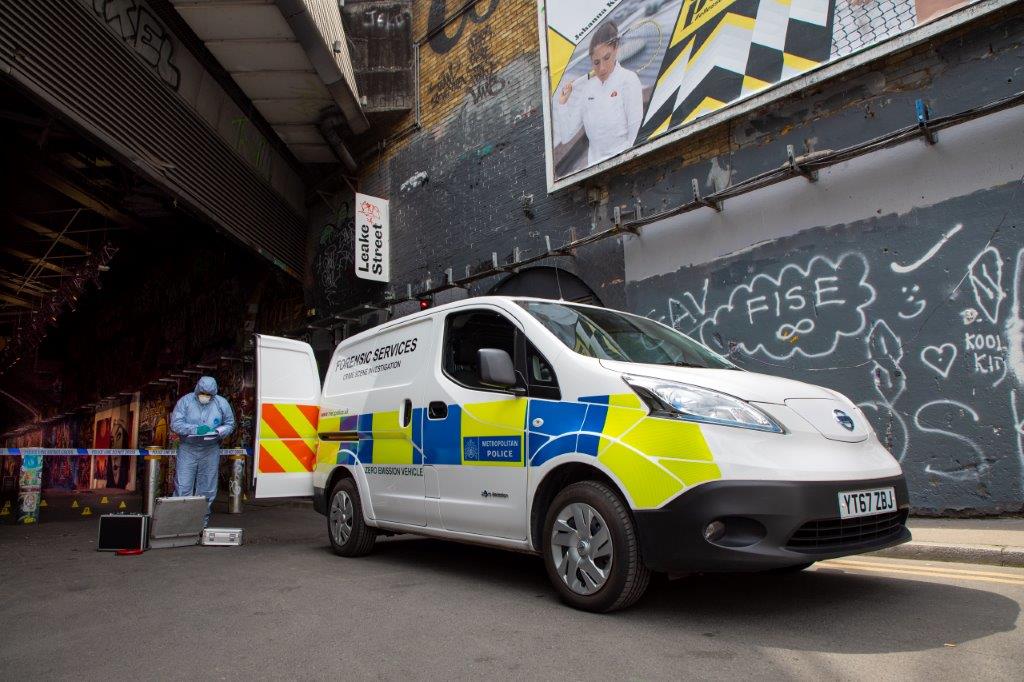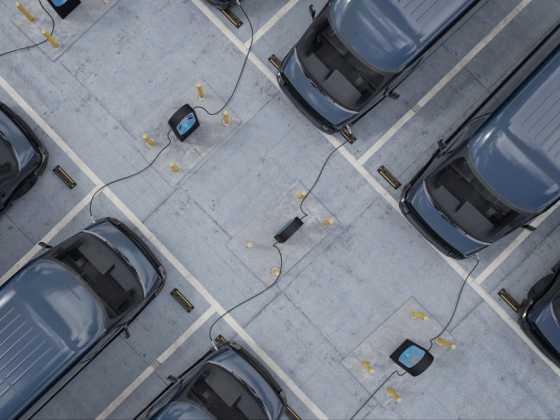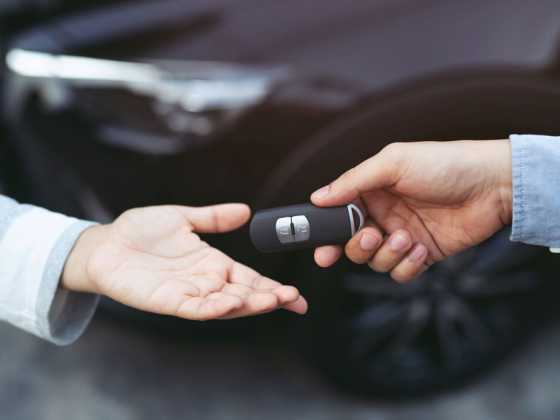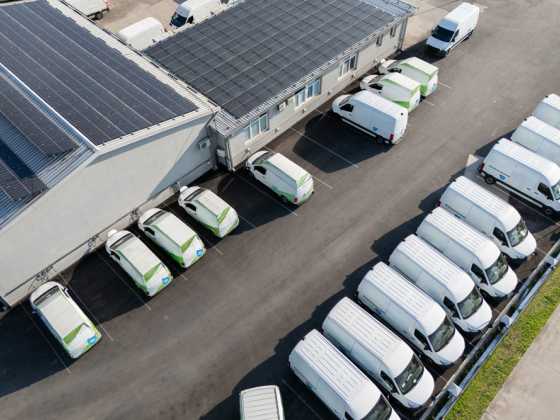Cleaning up the Met’s fleet

The Metropolitan Police Service has an end goal of having a fully zero emission fleet by 2050. Air quality lead Seth Finkelstein shares the Met’s current progress, as well as the challenges of reducing emissions from emergency service vehicles
What do you make of the Mayor of London’s clean air measures?
I fully support the Mayor’s vision to make London a zero carbon city by 2050 with the aim for London to have the best air quality of any major global city. There are plans to combat air pollution in many ways beyond motor vehicles, but the immediate measures for the Metropolitan Police Service (MPS) Fleet Services unit to address is the introduction of ultra-low emission zones (ULEZ). I support the implementation of these zones, ensuring that the most polluted areas are addressed first. Of course with any major initiative, there will always be some trials and tribulations but I don’t think anyone would argue with the overall objective of improving our air quality and the subsequent health benefits for us and future generations.
With a lot of hard work, we’ve been really successful in this area as all of our in-scope vehicles based in the ULEZ are 100 per cent compliant with emission requirements. Furthermore, with the ULEZ expanding to the North and South circular in 2021, we are already 76 per cent compliant with our current in-scope vehicles.
Being a blue-light service, what are the particular challenges you have to consider when adopting alternatively fuelled cars?
Our biggest challenge is that any alternatively fuelled cars we adopt cannot impact on our ability to perform operational duties.
A lot of our vehicles have unique specification requirements and must have the ability to perform to a certain standard in abnormal situations within demanding environments. To this end, some of our vehicles are not ready to be transferred from fossil fuel as yet due to limitations with current technology and what’s available. However, the progression in technology is moving forward quickly and we anticipate that the standards and capabilities we require of vehicles will be met as the alternatively fuelled vehicle industry advances.
Furthermore, we provide a round-the-clock service, so we have to ensure that there is appropriate fleet available at all times and that the fleet is in the right location. To ensure this happens, we have to make sure that there is adequate refuelling infrastructure available to support these alternatively fuelled vehicles.
This leads into our other big challenge around the refuelling of these vehicles, whether that’s electrical charging or access to hydrogen fuel. In regards to charging plug-in vehicles, we are trying to install internal vehicle charging capability within an estate that contains a lot of old buildings that have limited electrical capacity and limited space in car parks. In terms of hydrogen fuel, there are only a handful of refuelling stations that are available to us, so that has limited the amount of hydrogen vehicles we can incorporate into the fleet and severely restricts the locations that these vehicles can be based.
How did you make the business case for electric vehicles?
We work closely with MOPAC (Mayor’s Office of Policing and Crime) and the GLA (Greater London Authority) to ensure that we are meeting standards and targets, while not negatively impacting on operational policing requirements. We are all supporting the Mayor’s air quality, and wider environmental, strategy, so there has been no resistance as we are all working towards the same objectives. Internally, our senior leaders also support the overall objective and are very supportive of the adoption of alternatively fuelled vehicles, with the acknowledgment that it cannot be to the determent of operational policing. Again, lots of hard work has been completed so far to ensure that environmental and policing objectives are being met, with the knowledge that this hard work hasn’t stopped and will continue for years to come.
How are your electric and hybrid vehicles being used and charged?
A portion of our hybrid vehicles are being used as response vehicles, meaning they are livered with MPS logo/reflecting stickers, lights, sirens, etc, and attend emergency calls. Another portion of our hybrids, along with our fully electric cars, are used as general purpose vehicles. These vehicles are used to support officers when conducting investigations, visiting witnesses or victims of crime, or other non-emergency events.
There are also fully electric vans on the fleet that our forensics unit uses and some electric scooters that are used by our Roads and Transport Policing Command unit.
The majority of our charging is conducted within MPS premises. At the moment, we have over 200 charging points across the estate with ongoing work that continues to increase that number. All of our plug-in vehicles also have the capability to use public charge points as well, both locally and nationally.
How is the trial of hydrogen vehicles going?
The trial of hydrogen vehicles is going well. We had an 18 month trial of hydrogen scooters not too long ago and we currently have 21 hydrogen cars on the fleet. There has been really good feedback around the performance of these vehicles and they’re great environmentally as they are zero emission and the only exhaust product is water vapour.
I do see a future for this type of fuel/vehicle, but only if the refuelling infrastructure is there. At the moment, there are a limited number of refuelling stations and for this technology to really have a future, the infrastructure needs to be developed.
What are your future aims when it comes to your fleet?
Our immediate aims are to ensure that we are fully compliant with emission standards for our current in-scope vehicles within the North/South circular by 2021 when the ULEZ expands (as mentioned previously, we are currently at 76 per cent) and that our entire fleet meets required emissions standards by October 2023.
We also have targets to see that our entire general purpose fleet (circa 800 cars) all zero emission capable by 2025, that all new cars and vans are zero emission capable from 2025, all heavy-load vehicles being fossil fuel-free from 2030, all new cars and vans to be zero emission from 2030, and have a fully zero emission fleet by 2050.
What advice would you give other police forces considering adopting electric vehicles?
I think the key areas would be infrastructure, allocation of vehicles, and change champions. Regarding infrastructure, ensure there are charging points already installed, or expected to be installed, before the vehicles arrive. Public charging is a good back-up plan, but has various logistical complications. Having use of dedicated chargers is a must. Having them ready to use eases the implementation of the vehicles. Not only in terms of fully electric, but hybrids as well. You’ll find that the majority of users want to plug in the vehicle even if the vehicle can run on fossil fuel. It’s something new/different and they want to test it out.
To land these types of vehicles is a culture change and if you don’t provide the users with all the components up front, they may start to form a negative opinion from the off and have a reluctance to use them. Experience also shows that it can take a lot longer than you think to install a charging point. It’s not as simple as putting a charger on a wall. There are various factors that have to be taken into account such as, logistical space of the parking bay(s), source of electricity, current electrical capacity on the premises, UKPN approval, and so on.
Regarding the allocation of vehicles, it is really important that the amount and use of electric vehicles is conducive with the locations receiving them. Quick analysis should be conducted around what the vehicle is being used for, the miles it does on a daily/weekly basis, and ratio of vehicles to chargers. Are vehicles being used 24/7 or can they do a slow charge all night? All that needs to be taken into account to ensure there is a right balance of vehicles allocated to each location.
Having staff act as change champions on-site where these vehicles are based is extremely valuable. These should be people who are really proactive around this new technology. They can not only help promote the use of electric vehicles, but quickly become ‘experts’ in the best way to use the vehicle (i.e. depending upon the model and features, there are different modes and ways to drive that will get the best out of the vehicle) and share that knowledge with their colleagues. Change champions can also be a local SPOC for any issues that arise and look out for bad practices (e.g. misuse of charging cables) and any residual health and safety issues (e.g. cables creating trip hazards) and address them quickly.






